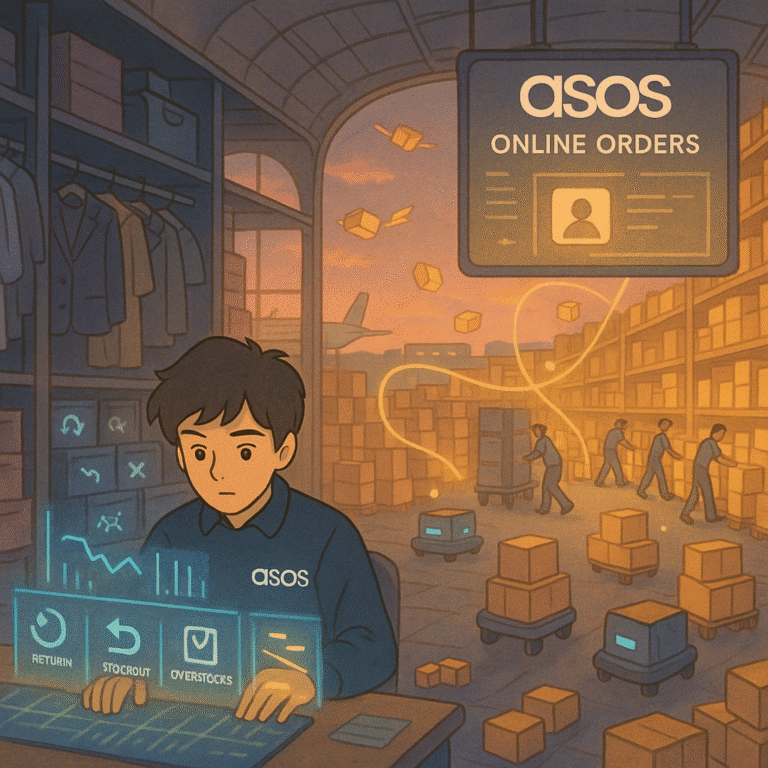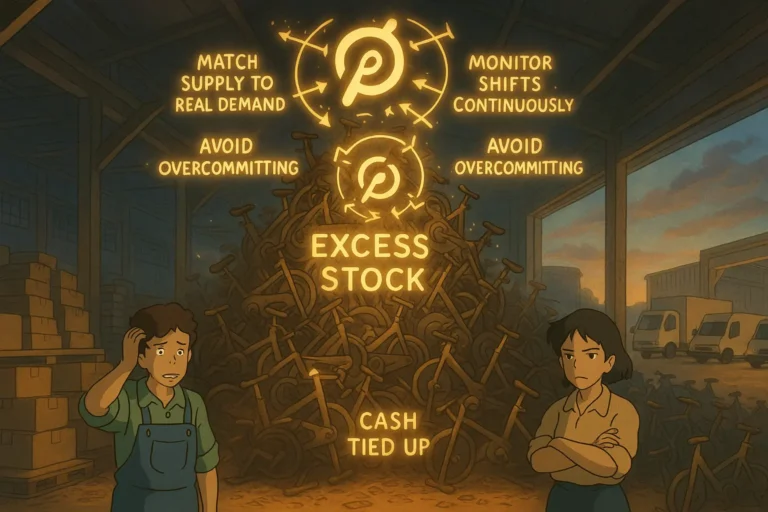
Demand and supply is the ultimate point of any supply chain, and balancing the two will determine how successful your supply chain management will be in Africa.
There are two situations in your supply chain management that you never want to be in.
- Overstocking
- Understocking
Many managers or schools of thought like to pick a preference, but they are equally as bad in different ways. More so, your supply chain will always lose money.
What are overstocking and understocking?
Overstocking is when you have too much inventory and too few demands for them. On the other end, understocking is when you have too little inventory and too much demand.
Creating the balance between these two is how your supply chain will thrive. This article will examine how to create that balance, the challenges of balancing supply and demand, and its importance.
Importance of Balancing Supply and Demand in Africa
Balancing your supply chain’s demand and supply in Africa and anywhere else in the world will engender the following:
Customer Satisfaction
Your customers are the reason behind your business and supply chain. Meeting their demands is your ultimate goal.
Failing to balance supply with demand can lead to stockouts, delayed deliveries, or supply chain downtimes, brewing dissatisfied customers. A dissatisfied customer will find alternatives.
Efficient Utilization of Resources
Balancing supply and demand ensures that your supply chain resources, such as labour, production capacity, and raw materials, are used efficiently.
Overproduction or underutilization of resources can lead to increased costs and waste.
Cost Reduction
When your supply closely aligns with demand, there is less need for excess inventory storage, which reduces carrying costs. It also reduces the cost of overproduction and cost from loss of sales.
Reduced Bullwhip Effect
Balancing supply and demand helps mitigate the bullwhip effect, where small fluctuations in demand can result in larger variations upstream in the supply chain.
This effect can lead to inefficiencies and increased costs.
Enhanced Supplier Relationships
A clear visibility into the demand and supply allows your suppliers to plan their production and deliveries more effectively.
An enhanced relationship between you and your suppliers fosters better relationships and can lead to favourable terms and pricing.
Competitive Advantage
Consistently getting your demand and supply right makes companies that consistently balance supply and demand more agile, flexible, and responsive, which will increasingly give you a competitive edge in the market.
Challenges to Balancing Demand and Supply in Africa
Balancing the demand and supply of any supply chain in Africa will face the following challenges:
Demand Forecasting & Variability
One of the primary challenges is accurately predicting future demand. Errors in forecasting can lead to either overproduction or stockouts.
Product demand can vary highly, influenced by seasonality, market trends, and unforeseen events like natural disasters or economic crises.
Supply Chain Lead Times
Long lead times in the supply chain can make it difficult to respond quickly to changes in demand.
These delays could be geographical or because manufacturing, shipping, or customs delays disrupt the balance.
Communication Gaps
Poor communication between different supply chain stages can result in misunderstandings and inefficiencies.
Inaccurate or inefficient communication of supply chain data can make it challenging to respond quickly to changes in demand. Miscommunication can lead to inaccurate orders and late deliveries.
Supplier Performance
Suppliers may not always meet delivery schedules or provide consistent product quality, which can disrupt the supply chain’s balance. Many times, these could be from capacity constraints.
Inter-continental Complexity
Managing supply chains spanning multiple regions or countries in Africa can introduce customs, transportation, and regulations complexities, making it challenging to balance supply and demand.
Environmental Factors
Natural disasters, geopolitical events, and other unexpected factors can disrupt supply chains, making it difficult to maintain the balance.
How to Overcome Poor Balancing of Demand and Supply in Africa
Several strategies for overcoming demand and supply deficits in your supply chain exist. Using any of them will depend on your supply chain operations and unique challenges.
1. Understand Your Customers
Your customers are the end point of your supply chain. They are the only ones the supply chain serves, so why not invest in understanding them?
When you understand your customers, it can go a long way to balancing demand and supply. Many times, demand is not just about getting a particular product.
E-commerce businesses will understand this very well. Customers often want the right goods at the right time and, in many cases, with the right tools.
I was a logistics manager for an oil and gas distribution company. Many times, customers will order a petroleum product, and it is on you to ensure they have the right tools to receive or make an alternative for them.
Now, all I had to do was ensure they got their product right?
But when the truck arrives and there was no receipt because of the lack of tools such as a hose, meter, and so on, Have I really delivered?
Understanding your customers goes a long way to ensuring you deliver the right product within the right circumstances to them. It will also aid our next strategy.
2. Supply/Demand Planning
Demand and supply planning always go hand in hand.
With demand planning, you try to collect and interpret all data that reflects the customer’s demand. You will typically do this through forecasting or analysing historical data.
Supply planning works with all data collected and analysed by the demand planners and then determines how to use the infrastructure and resources available to meet those demands.
For instance, as a logistics manager, I could have ten orders but only five trucks available to meet these demands. Now, I had to go through the process of prioritizing the orders using location, urgency, and type of product.
In many cases, I had to partner with other logistics companies to meet up with demands. That is the essence of supply planning. Figuring out how to meet the estimated demands.
3. Inventory Categorization
Not every inventory is created equal, and not every inventory generates the same number of sales. This is the crux of this strategy.
By categorizing your inventory, you are paying attention to the nature of inventory and its turnover rate. That is how fast it takes to sell out.
Ideally, the attention to each inventory will get will vary depending on the sales generated by them.
There are two major ways of categorizing inventories. You may use the ABC analysis or the Pareto’s principle.
ABC analysis entails categorizing your entire inventory into three groups. The highest selling, average sales, and low-level sales.
The Pareto method relies on the principle of the same name. It is finding out the 20% of inventory that generates 80% of sales and the 80% of inventory that generates 20% of sales.
By categorizing your inventory, you have a better plan for replenishing or producing each of them, creating more balance between your demand and supply.
4. Optimize Order Fulfilment and Inventory Replenishment
Order fulfilment and inventory replenishment are catalysts for balancing demand and supply.
In many cases, the reason for a disparity between your demand and supply is not because of a lack of inventory. It is because getting the inventory to the consumer is taking too long.
This will have the same impact on the customer as if there were no inventory because the product is yet to be received.
Conversely, it is a wasted resource for the business, especially when it gets to the customer late, and the customer is forced to reject it, which is the case with many e-commerce businesses in Africa.
Optimizing your order fulfilment entails collecting and analyzing historical data to determine the lead time and challenges the supply chain faces in delivering goods to customers.
When this is done, you may begin finding solutions or strategies to optimize order fulfilment. Conversely, Inventory replenishment allows you to enjoy a lower cost of carrying goods when done right.
To enjoy a very good inventory replenishment, there has to be effective communication between all supply chain stakeholders, allowing them to work seamlessly to ensure the right amount of inventory is always available.
FAQs on Balancing demand and supply in Africa
Q1: How can supply chains increase the accuracy of their demand forecasts?
Supply chains can increase accuracy using historical data, statistical models, market research, partner collaboration, and cutting-edge demand forecasting tools.
Q2:. What measures can be taken to lessen the bullwhip effect?
Some strategies include adopting demand-driven supply chain processes, real-time data exchange, and improving communication and collaboration among supply chain partners.
Q3: How can businesses improve inventory control to balance supply and demand?
Setting reorder points, safety stock levels, and employing just-in-time (JIT) or lean inventory principles to avoid overstocking or stockouts are all part of effective inventory management.

Obinabo Tochukwu Tabansi is a supply chain digital writer (Content writer & Ghostwriter) helping professionals and business owners across Africa learn from real-world supply chain wins and setbacks and apply proven strategies to their own operations. He also crafts social content for logistics and supply chain companies, turning their solutions and insights into engaging posts that drive visibility and trust.








